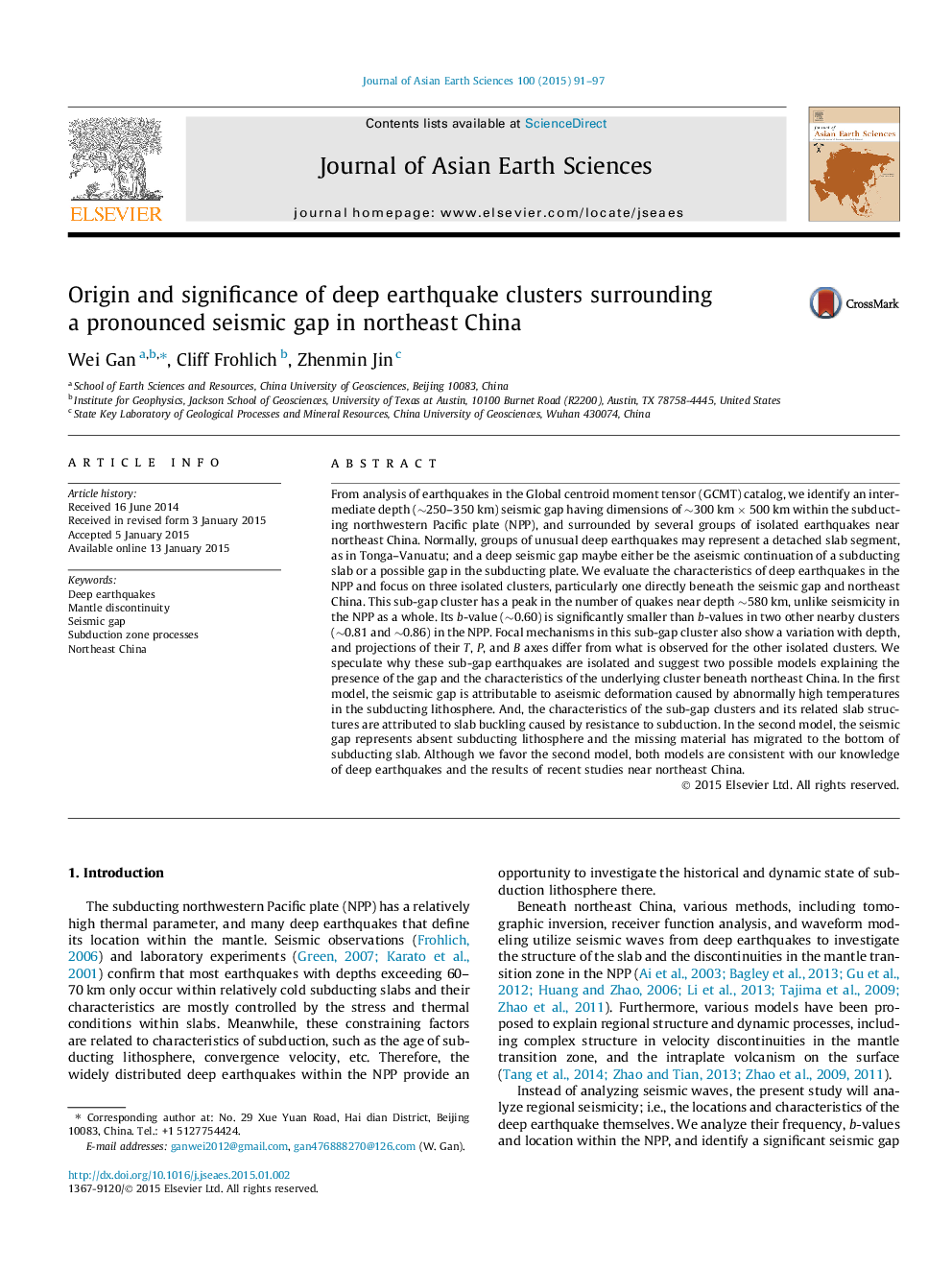| Article ID | Journal | Published Year | Pages | File Type |
|---|---|---|---|---|
| 4730473 | Journal of Asian Earth Sciences | 2015 | 7 Pages |
•A significant seismic gap exists within the subducting plate beneath China.•An isolated cluster of earthquakes beneath it has unusual characteristics.•The origin of both features is connected to complex mantle discontinuities nearby.
From analysis of earthquakes in the Global centroid moment tensor (GCMT) catalog, we identify an intermediate depth (∼250–350 km) seismic gap having dimensions of ∼300 km × 500 km within the subducting northwestern Pacific plate (NPP), and surrounded by several groups of isolated earthquakes near northeast China. Normally, groups of unusual deep earthquakes may represent a detached slab segment, as in Tonga–Vanuatu; and a deep seismic gap maybe either be the aseismic continuation of a subducting slab or a possible gap in the subducting plate. We evaluate the characteristics of deep earthquakes in the NPP and focus on three isolated clusters, particularly one directly beneath the seismic gap and northeast China. This sub-gap cluster has a peak in the number of quakes near depth ∼580 km, unlike seismicity in the NPP as a whole. Its b-value (∼0.60) is significantly smaller than b-values in two other nearby clusters (∼0.81 and ∼0.86) in the NPP. Focal mechanisms in this sub-gap cluster also show a variation with depth, and projections of their T, P, and B axes differ from what is observed for the other isolated clusters. We speculate why these sub-gap earthquakes are isolated and suggest two possible models explaining the presence of the gap and the characteristics of the underlying cluster beneath northeast China. In the first model, the seismic gap is attributable to aseismic deformation caused by abnormally high temperatures in the subducting lithosphere. And, the characteristics of the sub-gap clusters and its related slab structures are attributed to slab buckling caused by resistance to subduction. In the second model, the seismic gap represents absent subducting lithosphere and the missing material has migrated to the bottom of subducting slab. Although we favor the second model, both models are consistent with our knowledge of deep earthquakes and the results of recent studies near northeast China.
